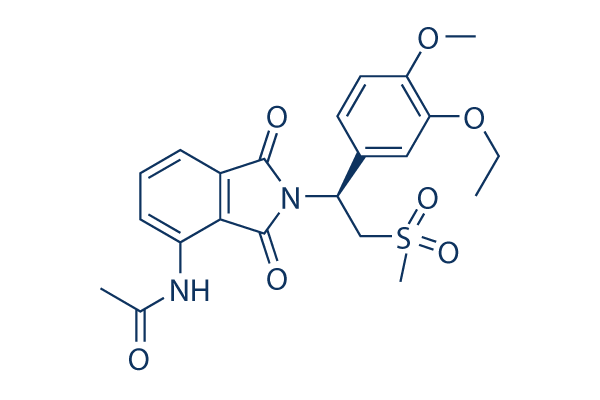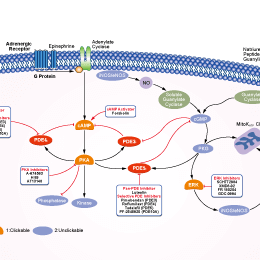
- Bioactive Compounds
- By Signaling Pathways
- PI3K/Akt/mTOR
- Epigenetics
- Methylation
- Immunology & Inflammation
- Protein Tyrosine Kinase
- Angiogenesis
- Apoptosis
- Autophagy
- ER stress & UPR
- JAK/STAT
- MAPK
- Cytoskeletal Signaling
- Cell Cycle
- TGF-beta/Smad
- Compound Libraries
- Popular Compound Libraries
- Customize Library
- Clinical and FDA-approved Related
- Bioactive Compound Libraries
- Inhibitor Related
- Natural Product Related
- Metabolism Related
- Cell Death Related
- By Signaling Pathway
- By Disease
- Anti-infection and Antiviral Related
- Neuronal and Immunology Related
- Fragment and Covalent Related
- FDA-approved Drug Library
- FDA-approved & Passed Phase I Drug Library
- Preclinical/Clinical Compound Library
- Bioactive Compound Library-I
- Bioactive Compound Library-Ⅱ
- Kinase Inhibitor Library
- Express-Pick Library
- Natural Product Library
- Human Endogenous Metabolite Compound Library
- Alkaloid Compound LibraryNew
- Angiogenesis Related compound Library
- Anti-Aging Compound Library
- Anti-alzheimer Disease Compound Library
- Antibiotics compound Library
- Anti-cancer Compound Library
- Anti-cancer Compound Library-Ⅱ
- Anti-cancer Metabolism Compound Library
- Anti-Cardiovascular Disease Compound Library
- Anti-diabetic Compound Library
- Anti-infection Compound Library
- Antioxidant Compound Library
- Anti-parasitic Compound Library
- Antiviral Compound Library
- Apoptosis Compound Library
- Autophagy Compound Library
- Calcium Channel Blocker LibraryNew
- Cambridge Cancer Compound Library
- Carbohydrate Metabolism Compound LibraryNew
- Cell Cycle compound library
- CNS-Penetrant Compound Library
- Covalent Inhibitor Library
- Cytokine Inhibitor LibraryNew
- Cytoskeletal Signaling Pathway Compound Library
- DNA Damage/DNA Repair compound Library
- Drug-like Compound Library
- Endoplasmic Reticulum Stress Compound Library
- Epigenetics Compound Library
- Exosome Secretion Related Compound LibraryNew
- FDA-approved Anticancer Drug LibraryNew
- Ferroptosis Compound Library
- Flavonoid Compound Library
- Fragment Library
- Glutamine Metabolism Compound Library
- Glycolysis Compound Library
- GPCR Compound Library
- Gut Microbial Metabolite Library
- HIF-1 Signaling Pathway Compound Library
- Highly Selective Inhibitor Library
- Histone modification compound library
- HTS Library for Drug Discovery
- Human Hormone Related Compound LibraryNew
- Human Transcription Factor Compound LibraryNew
- Immunology/Inflammation Compound Library
- Inhibitor Library
- Ion Channel Ligand Library
- JAK/STAT compound library
- Lipid Metabolism Compound LibraryNew
- Macrocyclic Compound Library
- MAPK Inhibitor Library
- Medicine Food Homology Compound Library
- Metabolism Compound Library
- Methylation Compound Library
- Mouse Metabolite Compound LibraryNew
- Natural Organic Compound Library
- Neuronal Signaling Compound Library
- NF-κB Signaling Compound Library
- Nucleoside Analogue Library
- Obesity Compound Library
- Oxidative Stress Compound LibraryNew
- Plant Extract Library
- Phenotypic Screening Library
- PI3K/Akt Inhibitor Library
- Protease Inhibitor Library
- Protein-protein Interaction Inhibitor Library
- Pyroptosis Compound Library
- Small Molecule Immuno-Oncology Compound Library
- Mitochondria-Targeted Compound LibraryNew
- Stem Cell Differentiation Compound LibraryNew
- Stem Cell Signaling Compound Library
- Natural Phenol Compound LibraryNew
- Natural Terpenoid Compound LibraryNew
- TGF-beta/Smad compound library
- Traditional Chinese Medicine Library
- Tyrosine Kinase Inhibitor Library
- Ubiquitination Compound Library
-
Cherry Picking
You can personalize your library with chemicals from within Selleck's inventory. Build the right library for your research endeavors by choosing from compounds in all of our available libraries.
Please contact us at [email protected] to customize your library.
You could select:
- Antibodies
- Bioreagents
- qPCR
- 2x SYBR Green qPCR Master Mix
- 2x SYBR Green qPCR Master Mix(Low ROX)
- 2x SYBR Green qPCR Master Mix(High ROX)
- Protein Assay
- Protein A/G Magnetic Beads for IP
- Anti-Flag magnetic beads
- Anti-Flag Affinity Gel
- Anti-Myc magnetic beads
- Anti-HA magnetic beads
- Poly FLAG Peptide lyophilized powder
- Protease Inhibitor Cocktail
- Protease Inhibitor Cocktail (EDTA-Free, 100X in DMSO)
- Phosphatase Inhibitor Cocktail (2 Tubes, 100X)
- Cell Biology
- Cell Counting Kit-8 (CCK-8)
- Animal Experiment
- Mouse Direct PCR Kit (For Genotyping)
- New Products
- Contact Us
Apremilast
Synonyms: CC-10004
Apremilast (CC-10004) is a potent and orally active PDE4 and TNF-α inhibitor with IC50 of 74 nM and 77 nM, respectively.

Apremilast Chemical Structure
CAS: 608141-41-9
Selleck's Apremilast has been cited by 8 publications
Purity & Quality Control
Batch:
Purity:
99.98%
99.98
Apremilast Related Products
| Related Targets | PDE1 PDE2 PDE3 PDE4 PDE5 PDE6 PDE10A PDE9 PDE4B | Click to Expand |
|---|---|---|
| Related Compound Libraries | Metabolism Compound Library Anti-cancer Metabolism Compound Library Glutamine Metabolism Compound Library Carbohydrate Metabolism Compound Library Lipid Metabolism Compound Library | Click to Expand |
Signaling Pathway
Choose Selective PDE Inhibitors
Biological Activity
| Description | Apremilast (CC-10004) is a potent and orally active PDE4 and TNF-α inhibitor with IC50 of 74 nM and 77 nM, respectively. | ||||
|---|---|---|---|---|---|
| Targets |
|
| In vitro | ||||
| In vitro | Apremilast is more potent for inhibition of PDE4 compared with cAMP or cGMP hydrolysing enzymes from other PDE families. Apremilast displays a broad pattern of anti-inflammatory activity in a variety of cell types, inhibits TNF-α, IL-12 and IL-23 production, as well as NK and keratinocyte responses. Apremilast is found to inhibit the zymosan-induced PMN production of IL-8 with IC50 of 94 nM. Apremilast inhibits fMLF-induced PMN CD18 and CD11b expression with IC50 of 390 nM and 74 nM, respectively, and inhibits fMLF-induced adhesion of PMN to HUVECs with IC50 of 150 nM. Apremilast inhibits keratinocyte TNF-αproduction, with no effect on keratinocyte cell viability as measured by intracellular ATP levels. [3] [4]. | |||
|---|---|---|---|---|
| Kinase Assay | PDE4 inhibitory activity | |||
| Cells (1×109) are washed in PBS and lysed in cold homogenization buffer (20 mM Tris-HCl, pH 7.1, 3 mM 2-mercaptoethanol, 1 mM MgCl2, 0.1 mM EGTA, 1 μM PMSF, 1 μg/mL leupeptin). Following homogenization in a Dounce homogenizer the supematant is collected by centrifugation and loaded onto a Sephacryl S-200 column equilibrated in homogenization buffer. PDE is eluted in homogenization buffer and the rolipram sensitive fractions pooled and stored in aliquots. Enzyme activity is assayed in 50 mM Tris- HCl, pH 7.5, 5 mM MgCl2 and 1 μM cAMP (of which 1% is3H cAMP) in the presence of varying concentrations of inhibitors. The amount of extract used is pre-determined to ensure that reactions are within the linear range and consumed lessthan15%of the total substrate. Reactions are performed at 30°C for 30 min and terminated by boiling for 2 min. The samples are then chilled and treated with snake 'venom (1mg/mL) at 30 °C for 15 min. Unused substrate is removed by incubation with 200 μL AG1-X8 resin for 15 min. Samples are then spun at 3000 rpm for 5 min and 50 μL of the aqueous phase taken for counting. Eachdata point is carried out in duplicate with activity expressed as percentage of control. IC50 is determined from dose response curves derived from three independent experiments. | ||||
| Cell Research | Cell lines | HEKn cells | ||
| Concentrations | ~10 μM | |||
| Incubation Time | 18 h | |||
| Method | For proliferation studies, human neonatal foreskin epidermal keratinocytes (HEKn cells) are plated at 3000 cells per well in 96-well flat bottom tissue culture plates for 2 days. HEKn cells are treated with apremilast or 0.1% DMSO as the vehicle control for 1 h before ultraviolet B (UVB) irradiation with 50 mJ/cm2 in a UV Stratalinker 2400, calibrated with 312 nm UVB bulbs. Media and compounds are replaced, and cells are incubated for 18 h. Lysates are transferred to plates and shaken for 2 min before chemiluminescence is read on a TopCount NXT Luminescence Counter. | |||
| In Vivo | ||
| In vivo | Apremilast is stable in the presence of human microsomes (t1/2 > 60 min). It is 90% protein bound in human plasma. Oral and intravenous administration of it in female rats showed that it have good pharmacokinetics with low clearance, a moderate volume of distribution, and a 64% oral bioavailability. In a LPS-induced TNF-αinhibition model in rats, examined the TNF-α inhibitory ability of Apremilast in vivo, and the ED50 is determined to be 0.03 mg/kg. In another LPS-induced neutrophilia model in rats, Apremilast exhibited an ED50 range from 0.3 mg/kg to 0.9 mg/kg.[1] | |
|---|---|---|
| Animal Research | Animal Models | Psoriasis mouse model |
| Dosages | 5 mg/kg/day, divided into b.i.d.doses | |
| Administration | Oral | |
| NCT Number | Recruitment | Conditions | Sponsor/Collaborators | Start Date | Phases |
|---|---|---|---|---|---|
| NCT06122649 | Recruiting | Plaque Psoriasis |
Amgen |
November 27 2023 | Phase 3 |
| NCT06108544 | Recruiting | Plaque Psoriasis |
Takeda |
November 6 2023 | Phase 3 |
| NCT06088043 | Recruiting | Plaque Psoriasis |
Takeda |
November 6 2023 | Phase 3 |
| NCT05926882 | Completed | Alopecia Areata |
Jinnah Postgraduate Medical Centre |
August 1 2022 | Phase 4 |
| NCT04804553 | Recruiting | Active Juvenile Psoriatic Arthritis |
Amgen |
March 17 2022 | Phase 3 |
| NCT04528082 | Recruiting | Behçet Disease |
Amgen |
September 9 2021 | Phase 3 |
Chemical Information & Solubility
| Molecular Weight | 460.5 | Formula | C22H24N2O7S |
| CAS No. | 608141-41-9 | SDF | -- |
| Smiles | CCOC1=C(C=CC(=C1)C(CS(=O)(=O)C)N2C(=O)C3=C(C2=O)C(=CC=C3)NC(=O)C)OC | ||
| Storage (From the date of receipt) | |||
|
In vitro |
DMSO : 92 mg/mL ( (199.78 mM); Moisture-absorbing DMSO reduces solubility. Please use fresh DMSO.) Water : Insoluble Ethanol : Insoluble |
Molecular Weight Calculator |
|
In vivo Add solvents to the product individually and in order. |
In vivo Formulation Calculator |
||||
Preparing Stock Solutions
Molarity Calculator
In vivo Formulation Calculator (Clear solution)
Step 1: Enter information below (Recommended: An additional animal making an allowance for loss during the experiment)
mg/kg
g
μL
Step 2: Enter the in vivo formulation (This is only the calculator, not formulation. Please contact us first if there is no in vivo formulation at the solubility Section.)
% DMSO
%
% Tween 80
% ddH2O
%DMSO
%
Calculation results:
Working concentration: mg/ml;
Method for preparing DMSO master liquid: mg drug pre-dissolved in μL DMSO ( Master liquid concentration mg/mL, Please contact us first if the concentration exceeds the DMSO solubility of the batch of drug. )
Method for preparing in vivo formulation: Take μL DMSO master liquid, next addμL PEG300, mix and clarify, next addμL Tween 80, mix and clarify, next add μL ddH2O, mix and clarify.
Method for preparing in vivo formulation: Take μL DMSO master liquid, next add μL Corn oil, mix and clarify.
Note: 1. Please make sure the liquid is clear before adding the next solvent.
2. Be sure to add the solvent(s) in order. You must ensure that the solution obtained, in the previous addition, is a clear solution before proceeding to add the next solvent. Physical methods such
as vortex, ultrasound or hot water bath can be used to aid dissolving.
Tech Support
Answers to questions you may have can be found in the inhibitor handling instructions. Topics include how to prepare stock solutions, how to store inhibitors, and issues that need special attention for cell-based assays and animal experiments.
Tel: +1-832-582-8158 Ext:3
If you have any other enquiries, please leave a message.
* Indicates a Required Field
Tags: buy Apremilast | Apremilast supplier | purchase Apremilast | Apremilast cost | Apremilast manufacturer | order Apremilast | Apremilast distributor








































